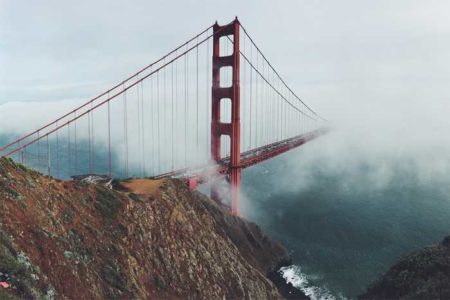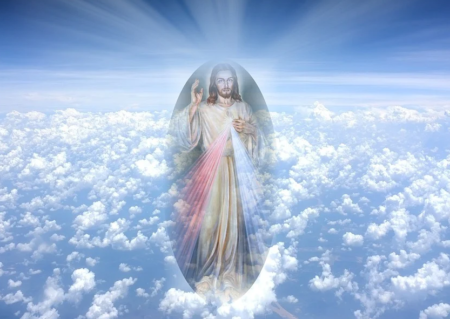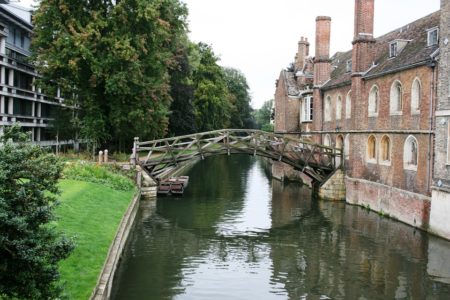Someone recently told me she dreamed about me. In the dream I was telling her to cross a bridge but she had to stay on her side. She said she wanted to come to me but she was shouting at me that she had something to finish on this side. She said she stepped on the bridge but as soon as she did, she couldn’t see the other side.
I thought this captured a lot about the times we are in. I guess the sense of transition, uncertainty and some things being left unfinished is familiar to us all. It reminds me of the Indiana Jones movie[1] where Indi has to prove he is worthy of the holy grail. A chasm opens before him to which there seems to be no bridge and only when he takes a step does the bridge appear before him.

So much of our conversations recently seem to express uncertainty about the future. We are somehow on a bridge but we are not sure what kind of bridge it is, and what awaits us on the other side.
Asked to do some reflection with a group of ministers this week I went to the Mass reading which was Jn 14:27.
‘Peace I bequeath to you, my own peace I give you,
a peace the world cannot give,
this is my gift to you.’
Because it is the Easter season I first thought it was the story of Jesus visiting the gathered disciples in the upper room but when I looked again it was this passage from the Last Supper. I saw for the first time how strange it was that Jesus offered peace when what was coming was upheaval, disappointment, violence and loss. This came just prior to a time when peace must have been the last thing on their minds.

Here the risen Jesus goes to where his followers are locked down and locked in. They are not peaceful but afraid. They have experienced devastation, change and their hopes (according to their colleagues departing the scene on the road to Emmaus in Luke 24) have been dashed. This was certainly a time of uncertainty and transition.
We naturally resist transition. I read recently (I don’t know where but it seems to be attributed to Ronald A Heifetz) that what we fear is not change, but loss. We resist being in this weird time. We are afraid of illness, yes, but also the loss of the old ways of being ‘us’ in the world. We are tempted to rush back into trying to recreate the old ways as soon as restrictions as lifted. What if we stopped? What if we let ourselves be in this bridge-time?
The bridge between these two passages – these two peace-greetings of Jesus, is his own death and resurrection. It happens that the period of our lockdown and the gradual lifting of restrictions is Lent, the Triduum and Eastertide (Pentecost too – another locked-in story and another story of the Spirit). Surely for people of faith this is an invitation to attend to something deep and fundamental.
What if this new situation – this entering and emerging from the tomb – is the means, the bridge to peace? More, what if this situation is in perfect continuity with what was before? What if, as people of faith, we could understand the paschal mystery as the deeper truth of our journey? What if we could understand the breath of the Spirit, breathed by the risen Christ in that room, as the perfect continuity in our lives: in and out, the livingness of God, carrying with it the paschal mystery in each life?
 Mathematical Bridge, Cambridge
Mathematical Bridge, Cambridge
Finally, a bridge. This is the Mathematical Bridge at Queens’ College in Cambridge. The story goes that Isaac Newton designed the bridge with such perfect mathematics that it did not need nuts and bolts. When people later deconstructed it to see how it was done they could not put it back without the nuts and bolts, and that is why it now has these in the appropriate places. This story is false! In fact, it was designed by William Etheridge and the nuts and bolts were part of the design. The mathematical part is in the use of tangents. As illustrated below these short straight pieces of wood were used to build the bridge structure, overcoming the problem that wood weakens when curved or bent.
So, the bridge was designed so that straight wood would make a curved structure. How does that speak to us? As we move forward and eventually reach the other side, whatever that is, we may need to employ what we already have in different and perhaps unexpected ways. It may not be that the skills and expectations which served us so well in the past are now useless, but perhaps we need to see differently, or in different colours to see how they might serve us now.
The Isaac Newton story was false. In a time of stopping and paying attention, we can ask ourselves whether the story to which we hold, individually or as communities, really deserves our allegiance; or does this time call us to revisit it for a deeper truth, giving way to a more solid structure, a better bridge into the future?
The lifting of restrictions lies ahead. As people of faith – as a team in a spirituality centre; as ministers and chaplains; as religious congregations; as parishes and dioceses – where is our attention? Are we rushing to the front of the queue to re-open, get busy and resume ‘normality?’ Or are we breathing with the Spirit; paying attention to a dying and rising; standing aside in love as others begin to pick up the pieces of their lives? What kind of bridge is beneath our feet? What step of faith are we called to take? How can we discern a new story which brings peace and new life?
A final question. How can we do this in service of others? Can this attention, discernment, prayer and stepping in faith also be a bridge for others? This old poem comes to mind:
The Bridge Builder
An old man, going a lone highway,
Came at the evening cold and grey
To a chasm vast and deep and wide
Through which was flowing a swollen tide.
The old man crossed in the twilight dim;
The rapids held no fears for him.
But he turned when safe on the other side
And built a bridge to span the tide.
“Old man,” cried a fellow pilgrim near,
“You’re wasting your time in building here.
Your journey will end with the closing day;
You never again will pass this way.
You have crossed the chasm deep and wide;
Why build you this bridge at even-tide?”
The builder lifted his old grey head.
“Good friend, in the path I have come,” he said,
“There follows after me today
A youth whose feet must pass this way.
This stream, which has been as naught to me,
To that fair youth may a pitfall be.
He too must cross in the twilight dim —
Good friend, I am building this bridge for him.”
By Will Allen Dromgoole (1860 – 1934)
Anne Francis
Galilee Spirituality Centre
[1] Indiana Jones and the Last Crusade, Paramount, 1989.


